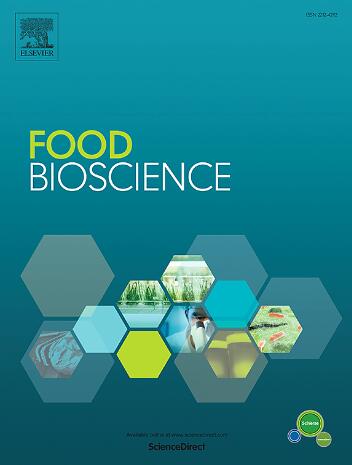Bioaccessibility of phenolic compounds in fermented strawberry-orange-apple-banana smoothies with lactobacilli
IF 4.8
1区 农林科学
Q1 FOOD SCIENCE & TECHNOLOGY
引用次数: 0
Abstract
The increasing prevalence of milk intolerance and dietary regimes avoiding dairy products have driven the growth of nondairy beverages with probiotics. Fruit smoothies enriched with lactic acid bacteria emerge as innovative alternatives. This study investigated the aptitude of a strawberry-orange-apple-banana smoothie to be fermented with the locally sourced potential probiotic Lactiplantibacillus plantarum LpAv (LpAv) and the commercial strain Lacticaseibacillus rhamnosus GG (LGG) under natural (pH = 3.5) or an adjusted pH (pH = 5.0). Moreover, the impact of incubation (37 °C for 18 h) and storage (28 d at 5 °C) of inoculated smoothies on the general quality and content and the in vitro intestinal and colonic bioaccessibility of phenolic compounds were studied. Lactobacilli did not ferment smoothies at pH = 3.5 but were an effective probiotic-delivering medium during storage (loads 7 log CFU/mL). Contrarily, smoothies at pH = 5.0 were fermented by lactobacilli, reaching bacteria levels of 9 log CFU/mL, with minimal reductions over storage. Fermentation increased the levels of some phenolic compounds such as ellagic acid (control: 0.4, LpAV: 0.6, LGG: 1.0 mg/100 mL), maintained or reduced the levels of others such as the anthocyanin pelargonidin-3-O-glucoside (control: 4.5, LpAV: 2.2, LGG: 2.6 mg/100 mL). However, the total bioaccessibility (intestinal plus colonic) of mainly phenolic compounds increased after fermentation and throughout the storage despite the observed degradations. Pelargonidin-3-O-glucoside intestinal bioaccessibility was 10 and 16 times higher than control in LpAv and LGG fermented smoothies, respectively. This study demonstrated the positive effects of fermentation on improving the phenolic compound bioaccessibility and highlights the potential of fruit smoothies as lactobacilli carriers.

求助全文
约1分钟内获得全文
求助全文
来源期刊

Food Bioscience
Biochemistry, Genetics and Molecular Biology-Biochemistry
CiteScore
6.40
自引率
5.80%
发文量
671
审稿时长
27 days
期刊介绍:
Food Bioscience is a peer-reviewed journal that aims to provide a forum for recent developments in the field of bio-related food research. The journal focuses on both fundamental and applied research worldwide, with special attention to ethnic and cultural aspects of food bioresearch.
 求助内容:
求助内容: 应助结果提醒方式:
应助结果提醒方式:


